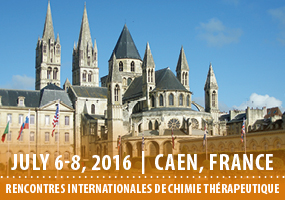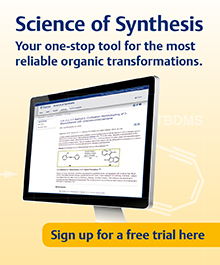
|
Editorial 2016This year’s International Conference on Medicinal Chemistry marks a turning point for chemical biology. New convergences point towards an accelerated path to the discovery of new medicines. The means by which new drugs are discovered has irreversibly changed, moving from empirical approaches to the emerging chemical biology discipline, which also includes computational and robotic approaches. An interdisciplinary strategy involving chemistry, life sciences and physics has always been the key to hacking major biomedical problems and to provide solutions to drug discovery. New convergences point towards an accelerated path to the discovery of new medicines. The changes in our laboratories are already visible as we have introduced new technologies and new competences among collaborators. So it is great news that an increasing level of dialogue between chemists, biologists, medicinal chemists, pharmacologists, and physicians has emerged in recent years, with the completion of the Human Genome Project, a milestone in this productive integration of how to think about achieving these objectives. And all of this comes at the same time as technology has transformed our laboratories. We have to think of progress in high-throughput screening initiatives, DNA microarrays, proteomics, protein microarrays, computational inference methods, availability of large collections of diverse datasets, and could go on. The two main aspects of modern drug discovery are directed towards identification of new targets, and discovery and development of active small molecules against them. Identification of new targets is a crucial process. It can be approached by direct biochemical techniques, genetic interactions or computational inference. Identification and development of new active molecules, using target-based approaches associated with molecular and cellular bioassays for the newly identified targets, then becomes the crucial step in the drug discovery process. The objective is then to investigate the basic questions in biology, and one aspect is to study interactions between small molecules and proteins to open new avenues for future drug discovery. Nowadays, chemical biology has become widely accepted to discover drug leads and represents the prevailing path of therapeutic innovation in which identification and validation of novel targets of drug action are of major concern. An example among others of the new direction of drug discovery integrating chemical biology includes the field of peptides. They are important natural compounds possessing diverse and interesting biological and physiological functions. However, this far, they only attracted scant attention from pharmaceutical companies. Perhaps they need to think again. The directed evolution techniques, the potential of peptides in modulating protein-protein interactions, and the progress in technologies to deliver peptides, makes this class of compounds among the most interesting on the block. Further complicating this are the connections in this new world between the public sector with its strong role in fundamental and basic research including target discovery and technology improvements, and the private sector, which is able to perform target validation and drug development. They have to be strengthened. |



























